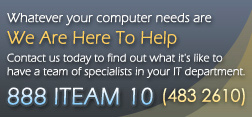EDI FAQ's
- What is Electronic Business?
- What is EDI?
- Who uses EDI?
- What is the difference between EDI and E-Business?
- Why do businesses use EDI?
- Who manages the EDI Standards?
- Why is CPR doing EDI?
- What is meant by the term "404"?
- How do companies communicate through EDI?
- Why can't the company just e-mail the information?
- Does CPR have to maintain direct connections with all of its trading partners?
- What is Steelroads?
- What do I need to do EDI?
- How does my information get to the EDI translator?
What is Electronic Business?
Electronic business is the transaction of business documents electronically. E-business originated because of the rapid advances in Internet technology that allow many business transactions to be done on-line. The Internet is now able to easily link suppliers, distributors, and customers. Through dedicated servers, tasks such as purchase orders, invoices, receipts and payments can be quickly and securely transmitted.
What is EDI?
Electronic Data Interchange (EDI), represents the computer to computer transfer of information in a structured predetermined format between 2 or more business partners, over a secured network.
Who uses EDI?
Most major companies are capable of EDI and many are moving toward doing the majority of their typical business transactions electronically. As the benefits become more obvious and accessible, in order to keep pace with today's business world, incorporating EDI into your business structure has become nearly mandatory.
What is the difference between EDI and E-Business?
E-Business can be the electronic exchange of information in any format; EDI is done through a standardized format and is particularly useful for a large volume of repetitive documents such as bills-of-lading or purchase orders commonly exchanged between business partners.
Why do businesses use EDI?
EDI saves money by making personnel more efficient, and it improves business capabilities by speeding up throughput, streamlining inventory, and enabling the automatic processing of documents. Furthermore, data integrity improves, reconciliation's are simpler, and EDI can easily be made an integral tool of your company's customer service.
Who manages the EDI Standards?
The American National Standards Institute (ANSI) creates standards specifically for EDI called "X.12". These standards are then taken and specialized within industries, as is done by the railway industry.
Why is CPR doing EDI?
CPR intends to transmit and receive most of our documents used for shipping information, supply invoices and receive electronic payments through EDI. Our eChannel management Team was started in response to our customers' requests for information to be sent via EDI, and we are developing the capacity to handle most of our typical transactions this way.
What is meant by the term "404"?
A "404" represents the ANSI X.12 transaction set that contains shipping information, and is commonly known as the rail freight Bill of Lading. Every EDI transaction is given three-digit number (as in "404"). For example, a Freight Bill is 410, and Payment Advice is 820.
How do companies communicate through EDI?
When two companies have agreed to conduct business via EDI, once they determine common standards and which documents to exchange, they are considered "Trading Partners". There are communication protocols available for PC's and mainframe systems that allow for the exchange of EDI messages with almost any trading partner.
Why can't the company just e-mail the information?
By automating the exchange of documents, EDI eliminates repetitive data-entry and common mistakes due to human error, two conditions to which e-mail is susceptible. With EDI, the information is automatically transferred between trading partners.
Does CPR have to maintain direct connections with all of its trading partners?
No. CPR interacts with trading partners via Value-Added Networks (VANs) managed by third parties. In a sense, the VANs resemble a postal service, delivering documents to the addressee on the "envelope" which accompanies every transmission.
What is Steelroads?
Steelroads is designed to provide end users a way to easily send shipping instructions to the railroads through a consistent process. It provides an easy-to-use product for end users who may not be familiar with the rail industry, as well as providing one location (site) to do business with the railroads.
- EDI management software: For optimum performance, the translation software should be on the same platform as your business application.
- Mapper: Levels of mapper information or integration very greatly from translator to translator.
- Communications software: Can be a module to the translator, a programming tool that enables you to write communications protocols, or a separate application.
- Internet connection: Ideally, the faster your connection, the better.
- Access to a VAN: The value-added-network acts as a gateway between your business and ours.
How does my information get to the EDI translator?
It is important that your business application seamlessly integrate with your EDI translation software. We can help you determine which applications are best suited for EDI business. After you define the document in the business application, you use the EDI mapper to create a map of the business document.

